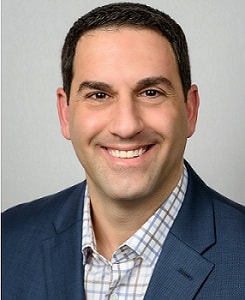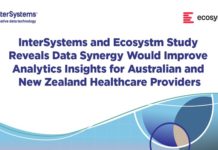If your home floods in the spring, it’s generally an indicator that you have a problem in your house, such as poor drainage or a sump pump failure. But if several houses in the same neighborhood flood, there’s a good chance something bigger is going on.
The same is true in the world of healthcare. Patterns of use of certain pharmaceuticals that fall outside the norm can be an indicator of a larger problem – and a larger opportunity. Yet it’s often difficult for providers and health plans to see those hot spots developing, because they are focused on individual instances.
That’s where closer collaboration between life sciences organizations and payers/providers
can be a huge difference-maker. By leveraging predictive patient-centered analyticsthat indicate where lower- or higher-than-expected level of drugs are being prescribed for a particular area, or among a specific population or risk stratification, providers and health plans can start to recognize these larger issues and take steps to correct them at the source. Resulting, of course, in improving patient/member outcomes while reducing the overall cost of care.
Access to wider data
Like homeowners only looking at what’s happening at their own houses, payers, providers and life sciences organizations generally only have insights into prescribing patterns for their own patient/member populations. This relatively narrow view may lead them to believe they are managing these populations effectively.
What they don’t see in their internal analytics, however, is that there could be a large number of undiagnosed patients/members who are currently flying under the radar. There may also be many patients/members who are trending toward a particular issue but haven’t reached the tipping point yet.
Life sciences organizations can work with payers and providers to see the larger picture because their sales data spans across multiple payers and providers at a macro level. By employing predictive analytics, life sciences organizations can not only show the current state but also help payers and providers become aware of issues so they can get ahead of trends before they become costly.
Putting it into practice
A good example of how this approach can be put into practice is with chronic conditions such as diabetes. When life sciences organizations run an analysis of sales of medications to treat diabetes, and then impose those sales on a geographical map, patterns will begin to emerge that show where the hot spots are.
The next step is the most critical, however. By bringing in Zip+4, demographic, and socioeconomic data into the analytics, and using it to create personas that represent segments of the overall population who share similar attributes, they can help payers and providers target who should be given extra attention around diagnosis and possibly preventive treatment before diabetes can develop.
For instance, people of Hispanic heritage have a higher tendency to trend toward diabetes. The analytics can identify areas with a high concentration of Hispanics where medications to treat diabetes are already being prescribed at a high rate. By sharing this data, life sciences organizations can help payers and providers refine their own risk scores. Payers and providers can then use their population health management mechanisms to encourage undiagnosed patients/members who fit the persona and are at high risk, as well as those in that group already known to be trending toward diabetes, to come in and have their HbA1c levels checked on a more regular basis.
Improving sales as well as health
The more life sciences organizations can help payers and providers meet their own goals for value-based care, the better their relationship with those organizations will be. That can pay huge dividends to the bottom line.
Rather than being seen as merely a vendor, life sciences organizations who provide analytic insights on drug performance related to quality and cost outcomes can become a true partner to payers and providers. While price will always be a factor, this value-add might help mitigate minor pricing differences leading to increased sales.
Having these analytics in-hand will also help commercial effectiveness teams drive sales – especially if they can demonstrate that their organization’s medications have been proven more effective at managing or mitigating conditions specific to a given area or population.
In areas where there is no current penetration for a particular medication, the analytics can uncover the need. For example, if the analytics show higher-than-normal opioid use in an area, that could be an entry point for conversations about medications that help wean patients/members off of opioids.
That is really the key. The analytics add value to the conversation that the competition can’t. In an era where payers, providers, and even life sciences organizations are being asked to take on more risk and demonstrate the effectiveness of their solutions, data-driven analytics that help identify issues early and prevent them from growing are invaluable sales tools.
High-water mark
Whether it’s homes flooding or patient/member health, spotting trends occurring in a given area is the first step to correction, and ultimately prevention.
Next-generation predictive analytics offer life sciences organizations the ability to identify previously unknown hot spots of health activity they can share with payers and providers, improving health, lowering costs – ultimately building a stronger bond on all sides.
























